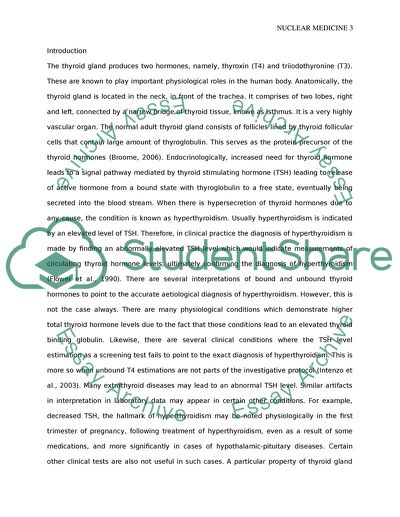Cite this document
(The Role of Nuclear Medicine in Hyperthyroidism Assignment - 1, n.d.)
The Role of Nuclear Medicine in Hyperthyroidism Assignment - 1. Retrieved from https://studentshare.org/health-sciences-medicine/1557259-the-role-of-nuclear-medicine-and-other-imaging-modalities-in-hyperthyrodism
The Role of Nuclear Medicine in Hyperthyroidism Assignment - 1. Retrieved from https://studentshare.org/health-sciences-medicine/1557259-the-role-of-nuclear-medicine-and-other-imaging-modalities-in-hyperthyrodism
(The Role of Nuclear Medicine in Hyperthyroidism Assignment - 1)
The Role of Nuclear Medicine in Hyperthyroidism Assignment - 1. https://studentshare.org/health-sciences-medicine/1557259-the-role-of-nuclear-medicine-and-other-imaging-modalities-in-hyperthyrodism.
The Role of Nuclear Medicine in Hyperthyroidism Assignment - 1. https://studentshare.org/health-sciences-medicine/1557259-the-role-of-nuclear-medicine-and-other-imaging-modalities-in-hyperthyrodism.
“The Role of Nuclear Medicine in Hyperthyroidism Assignment - 1”, n.d. https://studentshare.org/health-sciences-medicine/1557259-the-role-of-nuclear-medicine-and-other-imaging-modalities-in-hyperthyrodism.


